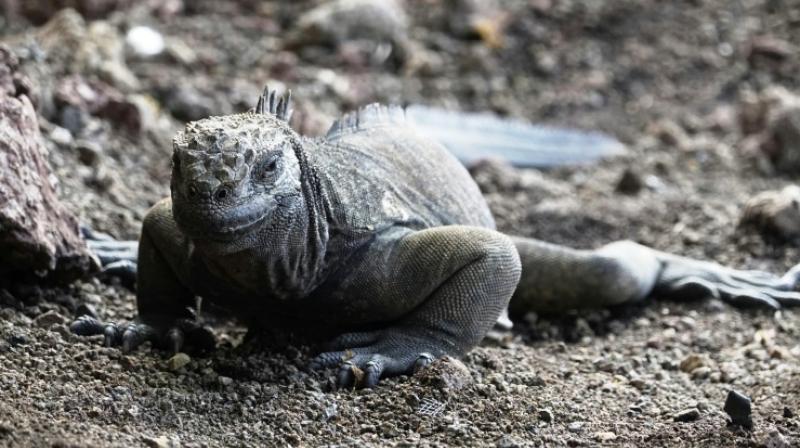Galapagos fauna under threat

Galapagos: Armed only with gloves and large sacks, park rangers and volunteers are battling the scourge of plastic waste blighting the idyllic Galapagos Islands and their unique creatures.
Tons of plastic wastes wash up on the shores of the Galapagos islands where microparticles end up in the stomachs of species found only in the Pacific archipelago 1,000 kilometers (600 miles) west of mainland Ecuador.
Those microparticles, often from waste discarded in big cities from other countries and even continents, are perhaps one of the greatest threats to the iguanas, tortoises, birds and fish of the Galapagos.
The tiny plastic pieces become part of the food chain "that we may later feed on," biologist Jennifer Suarez, a marine ecosystems expert with the Galapagos National Parks (PNG).
Sun rays and the ocean's saltwater break down bottles, bags, lids, containers and fishing nets. Yet while those objects may appear solid to the naked eye, when battered against rocks or by the force of waves, microparticles splinter off, which are subsequently ingested by animals.
Every year, and despite the punishing heat and sun, expeditionary groups arrive at Galapagos beaches to survey the damage caused by man. Sex toys, shoes, lighters, pens and tin cans are amongst the waste found in areas used by animals, including some in danger of extinction.
In uninhabited zones such as Punta Albemarle, in the far north of Isabela Island, where AFP joined a team of cleaners, waste from far and wide was discovered. "More than 90 percent of the waste gathered doesn't come from Galapagos activities, but rather from South America, Central America and even a great deal of waste with Asian branding," said PNG director Jorge Carrion.
With a population of around 25,000, the archipelago, a UNESCO World Heritage site, has tightened its rules regarding plastics use in recent years. Most of the plastic waste ashing up on the Galapagos shores are bottles of Peruvian, Colombian or Panamanian products, and containers with Chinese branding.
That waste "probably comes from the fishing fleets from Asia just outside the Galapagos' exclusive economic area," said Carrion, speaking from the PNG dock in Puerto Ayora, the capital of Santa Cruz Island.
Since 1996, local fishermen have been cleaning the remotest islands and for the last three years, they've been keeping a register.

